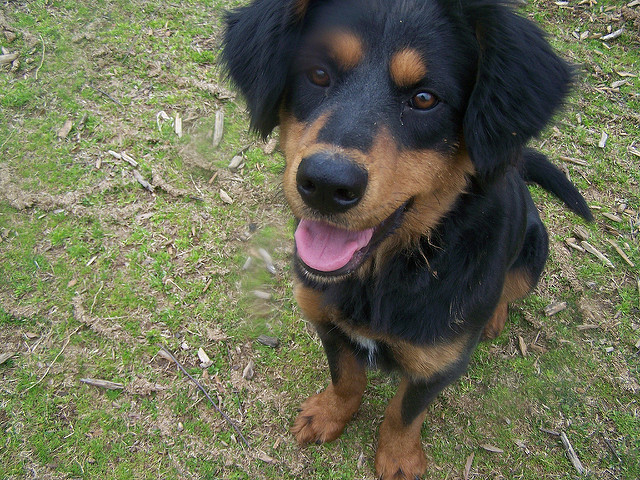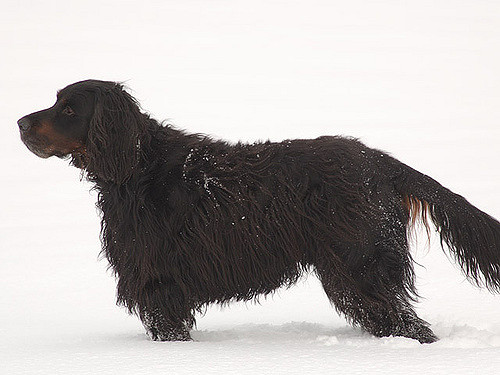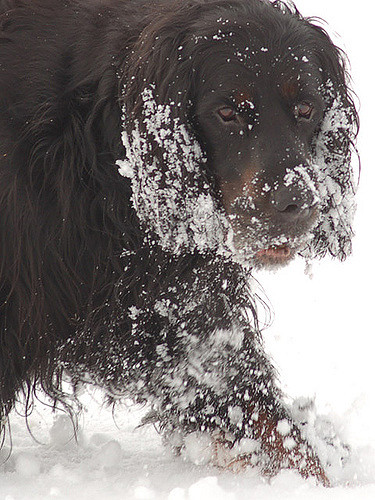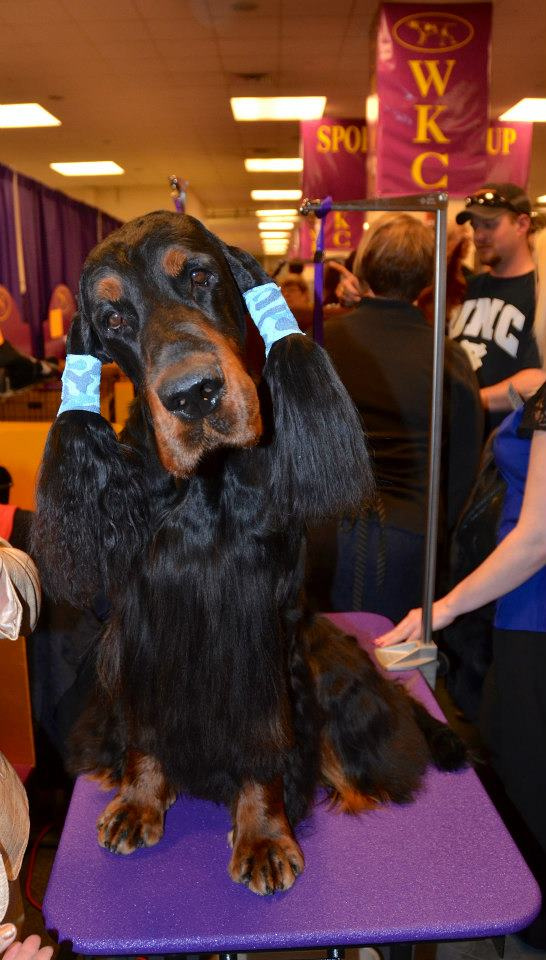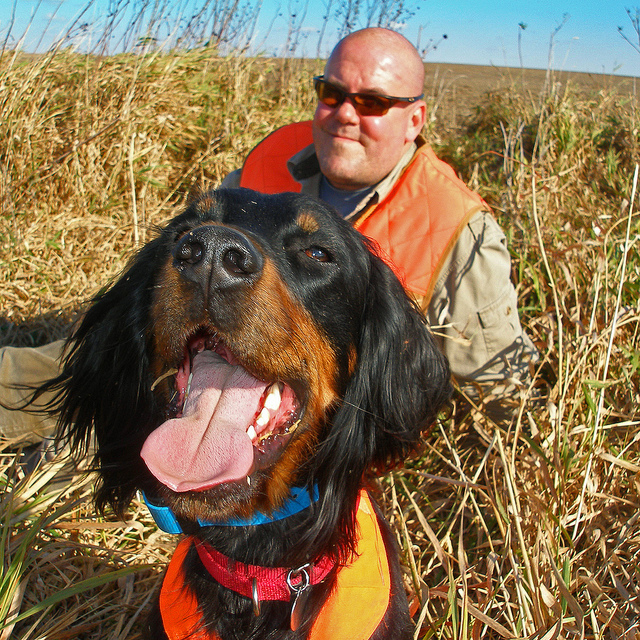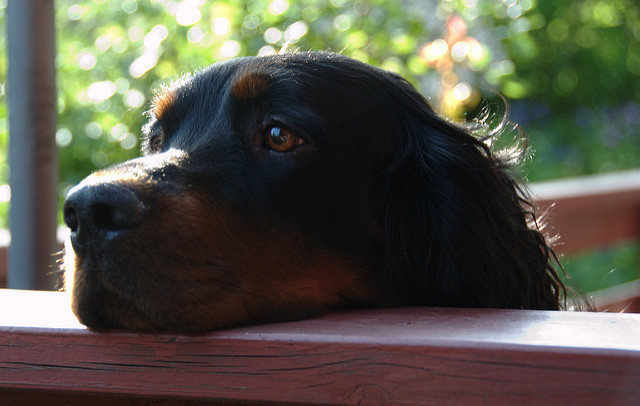The Gordon Setter, commonly known as black and tans, is an intelligent and confident dog belonging to the sporting or gundog group depending on the national kennel group. The original purpose of the breed was to hunt gamebirds, but they do make very good family pets and are known for their loyal and affectionate attributes. Read on to learn more about their history, temperament, and grooming needs.
Origin and History
These dogs were original bred around 150 years ago as “gun dogs”, dogs intended to work with gun wielding hunters. Most of these gun dogs were bred in the British Isles, and while this breed in specific is British, similar breeds such as the Welsh Setter and the English Water Spaniel share similar regional origins. Setters are closely related to spaniels, and like spaniels, were trained to track prey for human hunters with firearms. Many breeds were scared of gunfire, so humans needed to change that.
The exactly origins of this breed are somewhat obscure. This is likely due to the fact that these dogs were bred by ordinary English farmers and sportsmen rather than the specialized breeders. These days, breeders keep a rather long list of the dogs they’ve bred.
The name “Gordon Setter” was granted to the breed by the Kennel Club in 1924. Previously, they were known as black and tan setters. Members of the Kennel Club felt this name should be changed after the Black and Tans, an Irish secret police that terrorized Great Britain at the time, became well known. The breed received its new name from Alexander Gordon, the 4th Duke of Gordon, largely because most of the ancestors of the breed originated in Gordon Castle and its surrounding environs.
Appearance
Black and Tan Setter may be an inappropriate namesake for social reasons, but not physical ones. Gordon Setter dogs have coal black coats. They also have soft brown or chestnut coloration on their paws, lower legs, throats, muzzles and two spots on their chest. The Kennel Club does allow some amount of white on these dogs in formal dog shows.
Sometimes setters of this breed with red fur are born even to tan parents as a result of a recessive red fur gene that lurks inside their genetic code. Their fur is slightly wavy, though definitely not curly, and is silky and fairly long for a dog’s fur.
Males generally reach around 27 inches (around 69 centimeters in metric measurements) up to their withers and tend to top out the scales at around 80 pounds (35 kilograms) in weight. Females are, like most dog breeds, noticeably smaller.
The Gordon Setter Temperament
Gordon Setter dogs are generally described as being alert, typically quite interested in what’s going on around them. The dogs are good at paying attention to training and have an intense loyalty to their masters. These dogs are generally good family dogs, since they thrive when they get plenty of attention and affection. That said, even though these dogs may be quite patient they will still lash out when aggravated. It’s best to ensure small children are taught to respect5 the dog early on.
If you have several small children, it may be best to choose a different dog breed. These setters are certainly safe dogs, but one can’t watch a toddler at all times. Things may happen, and no one wants a dog to harm their children, or the other way around.
Socializing and giving them obedience training early on is fairly important for this breed. They learn slowly, giving owners time to let them internalize proper training and obedience. But because they learn slowly you have to start early. Otherwise you’ll have an adult dog that doesn’t understand why you’re so upset.
One other element of note is the fact that these dogs require around 60 to 80 minutes of vigorous exercise a day. Much like small children, this is to keep them from becoming overly energetic and thus destructive and extremely nervous. Gordon Setters should also not be allowed to roam freely without serious supervision as they are fast and single minded towards following scents.
Grooming
Since the hair on a Gordon Setter is wavy but not curly, you can get away with simply brushing its coat every so often. You shouldn’t need to bathe your dog any more often than any other dog, but it might not hurt to get them a haircut if you live in warmer climates. They are known for shedding, so this keeps the stray dog hair off your furniture.
Working Roles
As mentioned, the Gordon Setter was originally bred as hunting dogs. They still do this work, being taken out into the fields in order to flush out prey. This work is why the breed is so energetic. They have to be if they’re going to chase down birds and small animals!
Because they take so well to training, even if they do learn slowly, they’re also good as guard dogs for smaller homes and apartments. They’re quite vocal, and will let you know if someone’s in danger!
Overall Health
Unfortunately, Gordon Setter dogs don’t live as long as others. The average lifespan is only 10 to 14 years, on the short side for a dog. They also suffer from hip and elbow dysplasia, though this is fairly common for any hunting dog. They can occasionally wind up with progressive retinal atrophy, likely due to not using the more finely tuned eyesight they were bred to have for hunting purposes.
Most veterinarians suggest getting regular exams for eyes, hips, elbows, and thyroids. This can help cut many problems off at the pass, allowing you to treat the issues early on. Unfortunately, many of these problems can only be corrected with surgery. This can be rather expensive, especially considering how short the average lifespan is.
Still and all, the Gordon Setter can be a great companion for many years. They’re obedient and high energy, and while they may need supervision with especially young ones they’re quite protective of their people.
Below is a list of diseases to keep an eye out for the Gordon Setter breed:
- Hip Dysplasia
- Elbow Dysplasia
- Progressive Retinal Atrophy
- Gastric dlatation-volvulous
- Atrioventricular valve endocardiosis
- Dilated cardiomyopathy
- Ectropion
- Entropion
- Cataract
- Ciliary dyskinesia
- Atopy
- Callus formation
- Juvenile pyoderma (cellulitis or strangles)
- Vitamin A-responsive dermatosis

